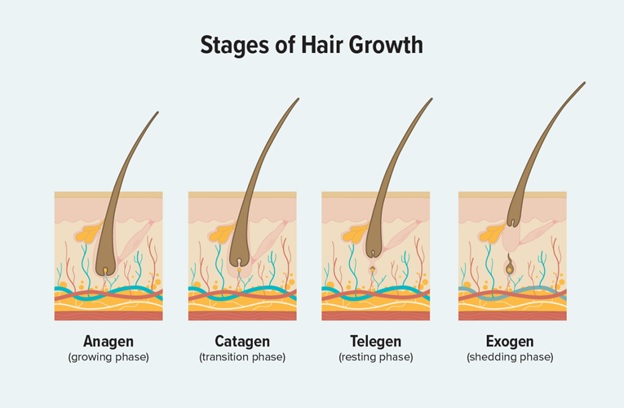Hair everywhere but not on the top of the head!
The most common concern of excessive hair fall and hair thinning in men and women is on the top of the head.
In men alopecia is characterized by balding spots on the top of the scalp and in women it is recognized by increased parting size and recession of hairline.
Hair plays an important role in defining our personality, identity how we look at ourselves. Hair loss can be a devastating experience and often leads to loss in self-esteem, depression, and withdrawal from society.
The hair on the body have a natural growth, shedding and regrowth cycle of their own. The old hair gets replaced by new and therefore normal hair fall for about 50-100 hair for women and 25—50 hair for men is common and not cause of worry.
However, if you notice more hair fall than normal or if you are suddenly facing a problem of dry, itchy scalp, and frizzy hair with spilt ends then it means that the hair is demanding attention.
Book Your Consultation
The stages of hair growth begin with the anagen phase. It’s the longest phase, lasting about 5 to 7 years for the hairs on your head, though for some people a single hair could continue growing for more than 7 years.
Fortunately, the anagen phase differs with different types of hair. For example, the anagen phase for eyebrow hairs and pubic hairs is much shorter than the phase for your scalp hairs.
During the anagen phase, your hair follicles are pushing out hairs that will continue to grow until they’re cut or until they reach the end of their lifespan and fall out. At any time, about 90 percent of the hairs on your head are in the anagen phase.
The catagen phase starts when the anagen phase ends, and tends to last about 10 days or so. During this stage, hair follicles shrink and hair growth slows. The hair also separates from the bottom of the hair follicle, yet remains in place during its final days of growing.
Only about 5 percent of the hairs on your head are in the catagen phase at any given time.
The telogen phase typically lasts around 3 months. Hairs don’t grow during the telogen phase, but they don’t usually fall out either. The telogen phase is also when new hairs start to form in follicles that have just released hairs during the catagen phase.
Some health experts consider the telogen phase the shedding phase, as well, but many scientists have divided this stage into two parts: the telogen and exogen stages.
The exogen phase is essentially an extension or a part of the telogen stage of hair growth. During the exogen phase, hair is shed from the scalp, often helped along by washing and brushing. Losing 50 to 100 hairs per day during the exogen phase is normal.
During the exogen phase, which can last about 2 to 5 months, new hairs are growing in the follicles as old hairs fall away.
Many lifestyle, hormonal and health factors can cause mild to severe hair loss. Hair loss can be temporary or permanent. The most common causes of hair loss are:
Having healthy, fuller hair depends on genetics and hormone levels, which are largely beyond your control, as well as manageable factors related to a healthy lifestyle and proper hair care. Some of the best strategies for all four stages include:
Because hair is largely made of protein, you should keep up your protein intake by focusing on healthy proteins.
A 2019 study in the journal Dermatology and TherapyTrusted Source also found that sufficient intake of the following nutrients was associated with healthy hair growth:
The Mayo Clinic reports three different premature hair-loss conditions related to high stress levels. They include:
This condition accelerates hair from the anagen phase into the telogen phase and then into the exogen phase, doubling or tripling normal daily hair loss
This psychological condition causes an irresistible urge to pull hair from your scalp or other areas of your body
This condition occurs when the body’s immune system attacks healthy hair follicles, causing hair loss
Learning to de-stress with the help of yoga, meditation, breathing techniques, counseling, and avoiding some of the daily stressors in your life may help reduce your stress, which can have many positive health benefits.
Healthy hair care starts with choosing the right shampoo. Look for products designed for your type of hair, whether it’s oily, dry, fine, color-treated, etc.
The right conditioner can also make a difference, but finding the right products may take some trial and error. Pay attention to how your hair responds to various shampoos and conditioners.
Treating your hair gently is also important to promoting healthy growth. Avoid very hot water when you shampoo and towel-dry your hair gently when you’re done. Hair is more vulnerable to damage when it’s wet. Turning down the heat when drying your hair may also make a difference.